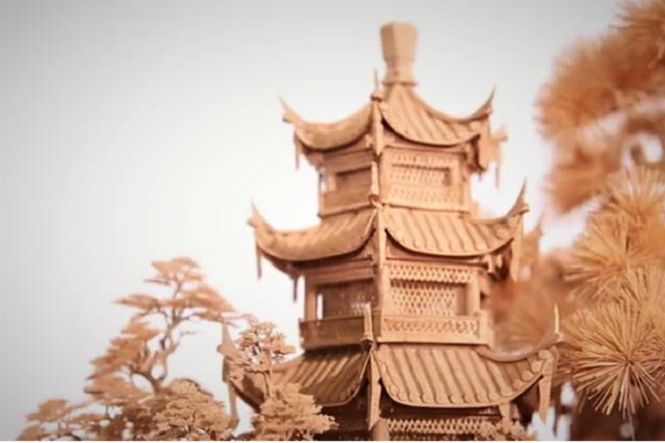·非遗百问·
81.软木画的历史渊源及制作工艺特点是什么?
答:软木画又叫“木画”,是流行于福建省福州地区的一种软木雕刻手工技艺的别称。它形成于 20世纪初,发源地是福建省福州市东郊的西园村。当时有一些类似“木画”的作品从德国流入中国,受此启发,福州工艺传习所总教习师、木雕名师陈春润和木雕技师吴启棋、建筑花板技师郑立溪等人吸收西方美术的优长,将之与中国传统木雕技法相结合,潜心研究出崭新的软木画技艺。
它以从西班牙、葡萄牙和阿拉伯等地进口的栎树木栓层软木为原料,制作时先将这种质地轻、松、富有弹性且纹理细腻的软木切削成薄片,而后运用各种传统雕刻技法,以刀代笔,用手工方式精雕细镂,形成纹理纤细的复杂画面,再点缀以具有民族风格的亭台楼阁,同时利用画框内有限空间营造景物而产生立体化效果。软木画源于自然,画面中时见宋人笔意,场景生动逼真,意境高古深远,风格清隽秀雅,呈示出“丛山数百里,尽在一框中”的艺术境界,被誉为“无声的诗,立体的画”。
截至目前,软木画的国家级传承人有:吴学宝。
Q81. What are the history and the technical features of cork paintings?
Answer: Cork painting is a cork carving craft popular in Fuzhou city of Fujian province. It was formed in early 20th century in Xiyuan village, which was in the east of Fuzhou. After seeing pictures made of cork brought home from Germany, the Fuzhou Craft Institute master and famous woodcarver Chen Chunrun, together with technicians Wu Qiqi and Zheng Lixi etc., integrated western arts with traditional Chinese woodcarving techniques to develop a brand new form of cork paintings.
The raw material is oak tree cork imported from places such as Spain, Portugal and Arabic countries. Being light, soft, elastic yet tightly textured, the cork is sliced into thin pieces and then carved by hand into delicate shapes. Traditional Chinese elements like pavilions, terraces and towers are often decorated at carefully designed places to contrast with background sceneries, creating a picture with perfect perspective. Cork paintings, often inspired by natural sceneries, use vivid depictions and ingenious layout design to lead the viewers into thousands miles of mountains in a limited picture, thus they are dubbed as “silent poems and three-dimensional paintings”.
The current national level inheritor of cork painting is Wu Xuebao.

福州软木画(福州市)
(图片来源于福建省艺术馆——省非遗中心官网)


